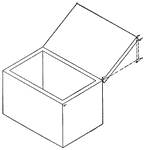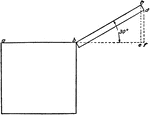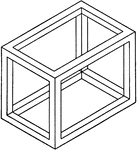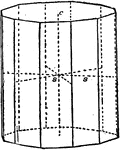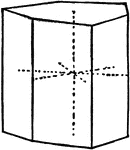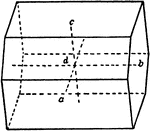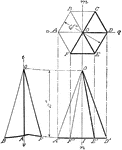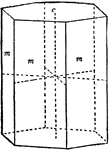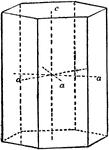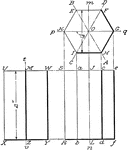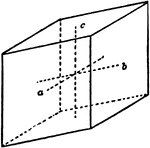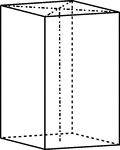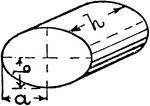The Prisms ClipArt gallery includes 166 examples of polyhedrons with two parallel faces, known as the bases, and with remaining faces that are parallelograms. Prisms are named by the shape of the base.
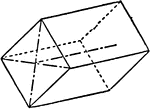
Brachy-prism and Macro-pinacoid
"This consists of four faces perpendicular to the vertical axis." -The Encyclopedia Britannica 1910

Cylinder Inscribed in Pentagonal Prism
Right circular cylinder inscribed in a pentagonal prism. Or, Pentagonal prism circumscribed about a…
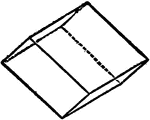
Direct Rhombohedra
"...consisting of six rhomb-shaped faces with the edges all of the equal lengths: the faces are perpendicular…
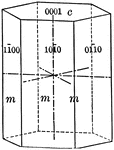
Prism of the first order
"This is a form consisting of six rectangular vertical faces each of which intersects two of the horizontal…
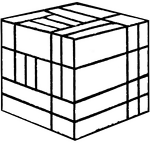
Froebel's Divided Cube (Complex)
This image shows one of Friedrich Froebel's divided cube (this one divided into many smaller cubes and…
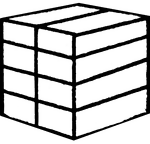
Froebel's Divided Cube (Eight Smaller Parallelograms)
This image shows one of Friedrich Froebel's divided cube (this one divided into eight smaller parallelograms).…
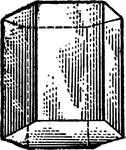
Hexagonal Prism
"Science has succeeded in classifying the thousands of known crystals in six systems, to each of which…
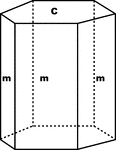
Hexagonal Prism and Basal Pinacoid
"...shows a combination of a hexagonal prism (m) with the basal pinacoid (c)." -The Encyclopedia Britannica…

Hexagonal Prism of the First Order
"Hexagonal prism of the first order, consisting of six faces also parallel to the hexad axis, but perpendicular…
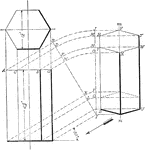
Projection Of Hexagonal Prism
Illustration of the projection of a hexagonal prism having two of its parallel sides parallel to the…
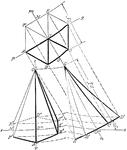
Projection Of Hexagonal Prism
Illustration of the projection of a hexagonal prism whose axis is parallel to the plane of the paper…

Development of Hollow Rectangular Prism
Pattern that can be used to make a hollow rectangular prism. Development of hollow rectangular prism.
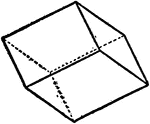
Indirect Rhombohedra
"...consisting of six rhomb-shaped faces with the edges all of the equal lengths: the faces are perpendicular…

Macro-prism and Brachy-pinacoid
"This consists of four faces parallel to the brachy axis." -The Encyclopedia Britannica 1910
Oblique Prisms
Showing different types of oblique prisms: rectangular, right triangular, acute triangular, and obtuse…
Oblique Prisms
Types of oblique prisms: right triangular prism, isosceles triangular prism, rectangular prism, cylinder.

Octagonal Prism Orthagonal Projection
Three dimensional to two dimensional representation of an octagonal prism

Plane Intersecting Octagonal Prism
Illustration showing the intersection of a plane with an octagonal prism.
Parallel Prisms
Showing different types of parallel prisms: rectangular, right triangular, acute triangular, and obtuse…
Parallel Prisms
Types of parallel prisms: right triangular prism, isosceles triangular prism, rectangular prism, cylinder.
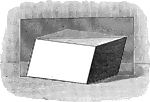
Parallelopiped with Plane Passing Through
Illustration of a parallelopiped with a plane passing through two diagonally opposite edges. The plane…

Parallelopiped with Plane Passing Through
Illustration of a parallelopiped with a plane passing through two diagonally opposite edges. The plane…
Parallelopiped Showing Volume
Illustration of a parallelopiped (a prism with a parallelogram as its base) used to demonstrate that…
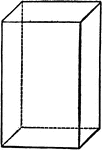
Parallelopipedon
"A parallelopipedon is a prism whose bases (ends) are parallelograms." —Hallock 1905
Prism
A transparent body, with usually three sides and two equal and parallel triangular ends or bases.
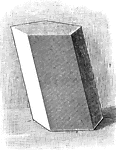
Prism
Illustration of a prism - a polyhedron of which two faces are equal polygons in parallel planes, and…
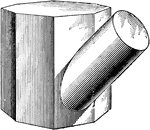
Intersecting Prism and Cylinder
Illustration of the intersection of an octagonal prism and a cylinder. The figures intersect at an oblique…
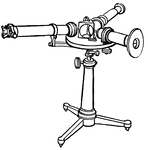
Prism Spectroscope from the Late 19th Century
"...a tube with a slit at the further end through which the light enters, and at the other end a collimating…
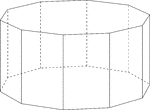
Decagonal Prism
Illustration of a decagonal prism with regular decagons for bases and rectangular faces. The hidden…
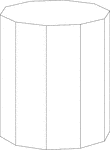
Decagonal Prism
Illustration of a right decagonal prism with regular decagons for bases and rectangular faces.

Decagonal Prism Resting On Its Side
Illustration of a right decagonal prism with regular decagons for bases and rectangular faces. The prism…
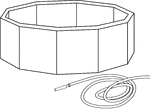
Swimming Pool Shaped Like A Decagonal Prism
Illustration of a swimming pool and water hose that is in the shape of a hollow regular decagonal prism…

Ditetragonal prism
"The dietetragonal prism is a form consisting of eight rectangular vertical faces, each of which intersects…
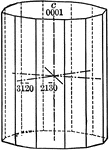
Dihexagonal prism
"The dihexagonal prism has twelve rectangular vertical faces, each of which intersects all three of…

First order prism
"The prism of the first order consists of four rectangular vertical faces, each of which intersects…
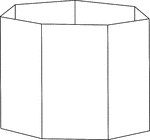
Heptagonal/Septagonal Prism
Illustration of a hollow right heptagonal/septagonal prism with regular heptagons/septagons for bases…
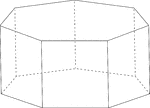
Heptagonal/Septagonal Prism
Illustration of a regular right heptagonal/septagonal prism with regular heptagons/septagons for bases…
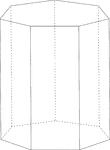
Heptagonal/Septagonal Prism
Illustration of a right heptagonal/septagonal prism with regular heptagons/septagons for bases and rectangular…
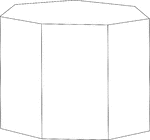
Heptagonal/Septagonal Prism
Illustration of a right heptagonal/septagonal prism with regular heptagons/septagons for bases and rectangular…
